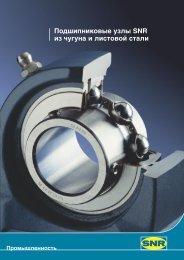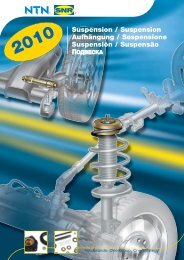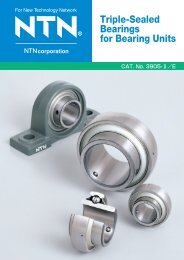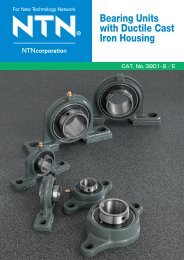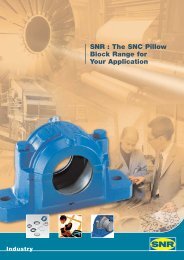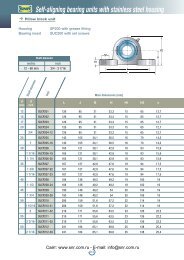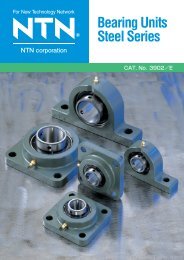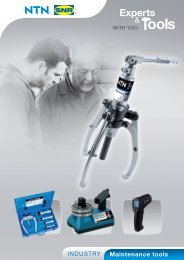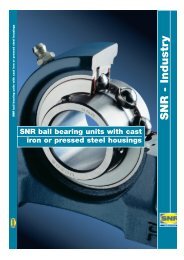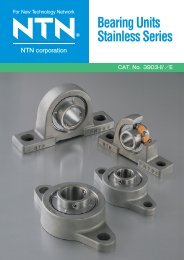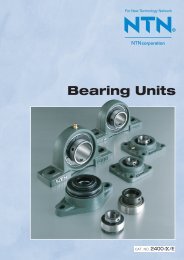plaquette MACHLINE - Ntn-snr.com
plaquette MACHLINE - Ntn-snr.com
plaquette MACHLINE - Ntn-snr.com
You also want an ePaper? Increase the reach of your titles
YUMPU automatically turns print PDFs into web optimized ePapers that Google loves.
Installation: rules to follow<br />
Run-in procedure<br />
The run-in procedure has a considerable influence<br />
on the accuracy of spindle rotation and its service<br />
life. The procedure must be carried out in steps,<br />
depending on the spindle type and temperature<br />
rise. The rotation speed of the first step must be at<br />
a low enough N.Dm (of the order of 10 5 ) to be certain<br />
that the lubrication film is established.<br />
Run-in time at each step depends on the time<br />
required for bearing temperature to stabilise. As<br />
soon as the temperature is stabilised, move on to<br />
next step.<br />
T°<br />
Example of run-in cycle<br />
of a spindle at 15,000 rpm.<br />
1,000 rpm.<br />
Step 1<br />
3,500 rpm.<br />
Step 2<br />
7,000 rpm.<br />
Step 3<br />
15,000 rpm.<br />
Step 4<br />
Time<br />
Characteristic failures<br />
Spalling failures due to material fatigue are<br />
extremely rare on MachLine spindle bearings.<br />
Spindle failures are more characterized by deviation<br />
of a certain number of factors observed and measured<br />
on the manufactured <strong>com</strong>ponents, which<br />
indicate the requirement for spindle maintenance.<br />
These factors are:<br />
- Difficulties in maintaining dimensions.<br />
- Increasing geometrical defects such as circularity<br />
or radial run-out.<br />
- Poor surface finish.<br />
- Unusual surface condition (chatter marks, vibration,<br />
etc.).<br />
- Abnormal noises in operation.<br />
In 70 % of cases failures are linked to lubrication<br />
problems and in 10 % of cases, linked to the sealing<br />
system or a sudden impact between the part<br />
and the tool which can cause damage to spindle<br />
and bearings.<br />
The bearing itself is rarely the cause<br />
of premature failure.<br />
66



